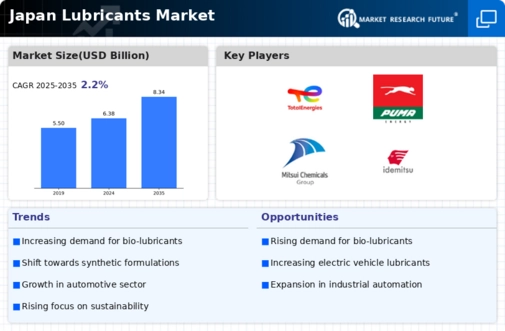The Japan Lubricants Market demonstrates a robust competitive landscape characterized by the presence of both domestic and international players. This market is driven by the increasing demand for high-performance lubricants across various sectors, including automotive, industrial, and marine applications. Technological advancements and stringent regulations regarding emissions and energy efficiency further intensify competition among market participants, prompting innovation and the introduction of environmentally friendly products. With growing awareness of the importance of optimal lubrication to enhance equipment reliability and longevity, companies in this sector continuously explore strategies to strengthen their market positions and capture larger shares of the growing consumer base.
Showa Shell Sekiyu is a prominent player in the Japan Lubricants Market, which is recognized for its strong brand equity and extensive distribution network. The company has established a significant presence in the lubricants segment, focusing on producing high-quality automotive and industrial lubricants tailored to the specific needs of Japanese consumers. Its strengths lie in its commitment to research and development, enabling it to introduce advanced formulations that enhance performance and protect engines.
Additionally, Showa Shell Sekiyu’s brand loyalty among consumers, which has been established over decades, contributes to its competitive edge, helping the company maintain a sizable market share in an increasingly competitive environment.TotalEnergies, another key competitor in the Japan Lubricants Market, offers a wide range of lubricants and associated services tailored to various industries, including automotive and industrial sectors. The company's comprehensive product portfolio is designed to meet the rigorous demands of the Japanese market, focusing on innovative solutions that promote sustainability and efficiency.
TotalEnergies has established strong relationships with automotive manufacturers and industrial clients across Japan, which bolster its market presence. Furthermore, its strategic initiatives, such as mergers and acquisitions, have enabled the company to expand its operations and product offerings in the region. With a focus on advanced technology and sustainability, TotalEnergies continues to assert its presence in the competitive landscape, enhancing its appeal to environmentally conscious consumers and businesses looking for reliable lubrication solutions.















Leave a Comment